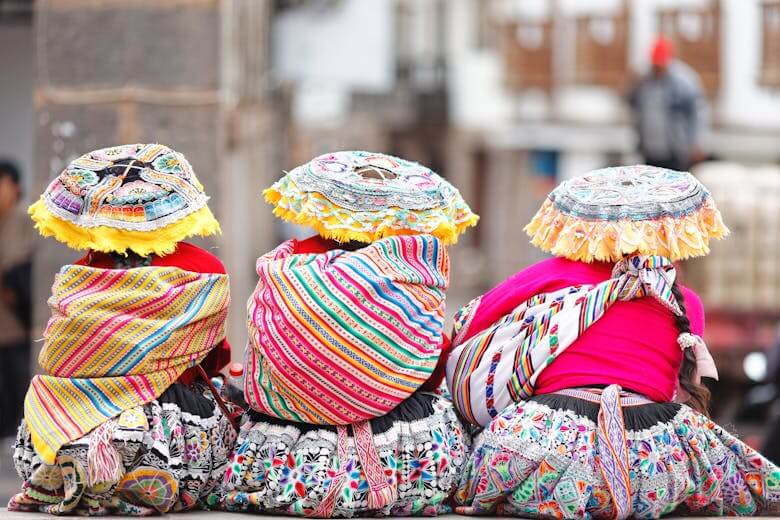Research and Respect on International Day of the World’s Indigenous Peoples

Since 1995, The International Day of the World’s Indigenous Peoples (IDWIP) has been observed on 9th August each year, with the goals of celebrating the achievements of indigenous people and raising awareness of the issues facing them.
In honor of IDWIP 2024, I would like to focus on why indigenous knowledge matters, how researchers can responsibly incorporate indigenous perspectives, and how ethical research practices start with properly engaging their communities
Who indigenous peoples are
“Indigenous peoples” would strictly mean the original inhabitants of any given region, but in common parlance and academic discourse, this term refers to those original inhabitants who maintain their distinct cultural traditions and languages despite the encroachment of industrialized societies. “Indigenous peoples” may be a slightly flawed “catch-all” name, but it remains useful for highlighting the shared experiences and challenges of original inhabitants worldwide.
Indigenous peoples have historically faced anything from resource competition, to discrimination, to outright genocide, with very little advocacy outside their communities. While changes in attitudes among colonizing cultures have reduced the worst of these issues, indigenous peoples remain marginalized in many countries and struggle to preserve their heritage and rights amid modern societal pressures.
The unacknowledged contributions of indigenous people in research
There’s a tendency for cultural chauvinism among the developed world where established cultural practices and ways of thinking among industrialized societies are considered the only ways of tackling global issues. As one example, despite indigenous people being disproportionately affected by climate issues, climate research has usually centered the perspectives of the so-called WEIRD—western, educated, industrialized, rich, and democratic—people and institutions.
The “WEIRD as default” way of thinking is rooted in colonialism where indigenous people were usually treated as obstacles to the exploitation-focused goals of colonizers. When their traditions and stories were not simply repressed, they were often fetishized or commodified without respect for their origins. Overall, the role of indigenous people in research usually goes unacknowledged.
However, indigenous knowledge has already influenced our science and technology in ways we rarely recognize. Rosy periwinkle (Catharanthus roseus) is not only a pretty plant, but it also has a fascinating history where hundreds of years of indigenous knowledge culminated in a scientific breakthrough. It was used medicinally for many issues by the Malagasy people of Madagascar before being spread throughout the Indian Ocean by cuttings. Its properties were recognized in Ayurveda and traditional Chinese medicine for centuries before it was investigated in the 20th century by pharmaceutical researchers in the United States. These researchers isolated two compounds, vincristine and vinblastine, finding they can respectively inhibit white blood cell proliferation and overall cell division.
These two chemicals became novel chemotherapeutic agents, which greatly increased the survival rates of certain cancers, particularly leukemia. Had American chemists never paid attention to indigenous perspectives, these drugs that have saved countless lives might never have been realized.
This is just one example among many. Controlled burning was used extensively by aboriginal people in Australia and the Americas to prevent wildfires and promote biodiversity. Rāhui, a system of cultural norms to conserve resources, was used extensively by the Māori of New Zealand. The seeds of the Moringa tree from India have been used to purify water. All of these are now subjects of applied research to help us overcome real-world issues outside of their original context.
Ethically engaging with indigenous peoples in research
Issues with research collaboration to date
Even in recent years, it has been common for researchers to flout basic informed consent practices. One notorious case was the Havasupai scandal, where researchers from Arizona State University (ASU) had used blood samples taken for type 2 diabetes research in 1989 in later studies on inbreeding, migration, and mental illness. Beyond violating the cultural norms of the Havasupai, the researchers failed to show the basic respect that the non-indigenous community expects when they consent to their tissue samples being used in research. This became a landmark case, with ASU paying a hefty cash settlement and returning the blood samples.
Even without such flagrant violations of human rights, science conducted with the help of indigenous peoples has often involved “helicopter research,” in which investigators briefly engage with a community to gather data or materials without any substantial interactions or reciprocal benefits. In some cases, these researchers even task indigenous people with collecting data without even crediting their contributions.
Best practices
Maintain informed consent and transparency
Any research with human participants requires communicating the aim, procedures, and possible risks of a study. Any participation must be made voluntarily. Indigenous communities have the right to free, prior informed consent, and should expect the same treatment as any other populations. It may be necessary to develop new consent forms or use a trusted interpreter to ensure that they understand their rights and your responsibilities.
Collaborate in making decisions
When indigenous people participate in research, they become stakeholders, which gives them a seat at the table of the decision-making process. Including indigenous perspectives ensures that research addresses community priorities, rather than imposing external agendas. This can make the research more culturally sensitive and more likely to be accepted by the involved community. It also gives excellent opportunities for indigenous communities to provide their feedback and suggest overlooked aspects of the research, potentially improving the overall scientific value of the study.
Make long-term, reciprocal relationships—not transactional ones.
Trust is like a sandcastle. It takes time and effort to build, but can be destroyed in a second by somebody carelessly stepping on it. In research, trust is earned through being consistent and respectful. Engaging with indigenous people over the long term can also help researchers to understand the challenges and aspirations of a community better. Finally, maintaining that trust is vital to making sure that research benefits are shared and sustained over time.
Conclusion
Giving space for indigenous voices and treating indigenous counterparts as equal partners isn’t only a matter of justice and fairness—it’s a vital part of making research effective and sustainable. Indigenous people have contributed a lot to science, and usually, all they ask in return is respect.
This year, IDWIP is focusing on “Protecting the Rights of Indigenous Peoples in Voluntary Isolation and Initial Contact,” which highlights some of the most vulnerable communities on earth, who often attract considerable attention from scientists. The UN page for IDWIP is an excellent primer on these issues.







